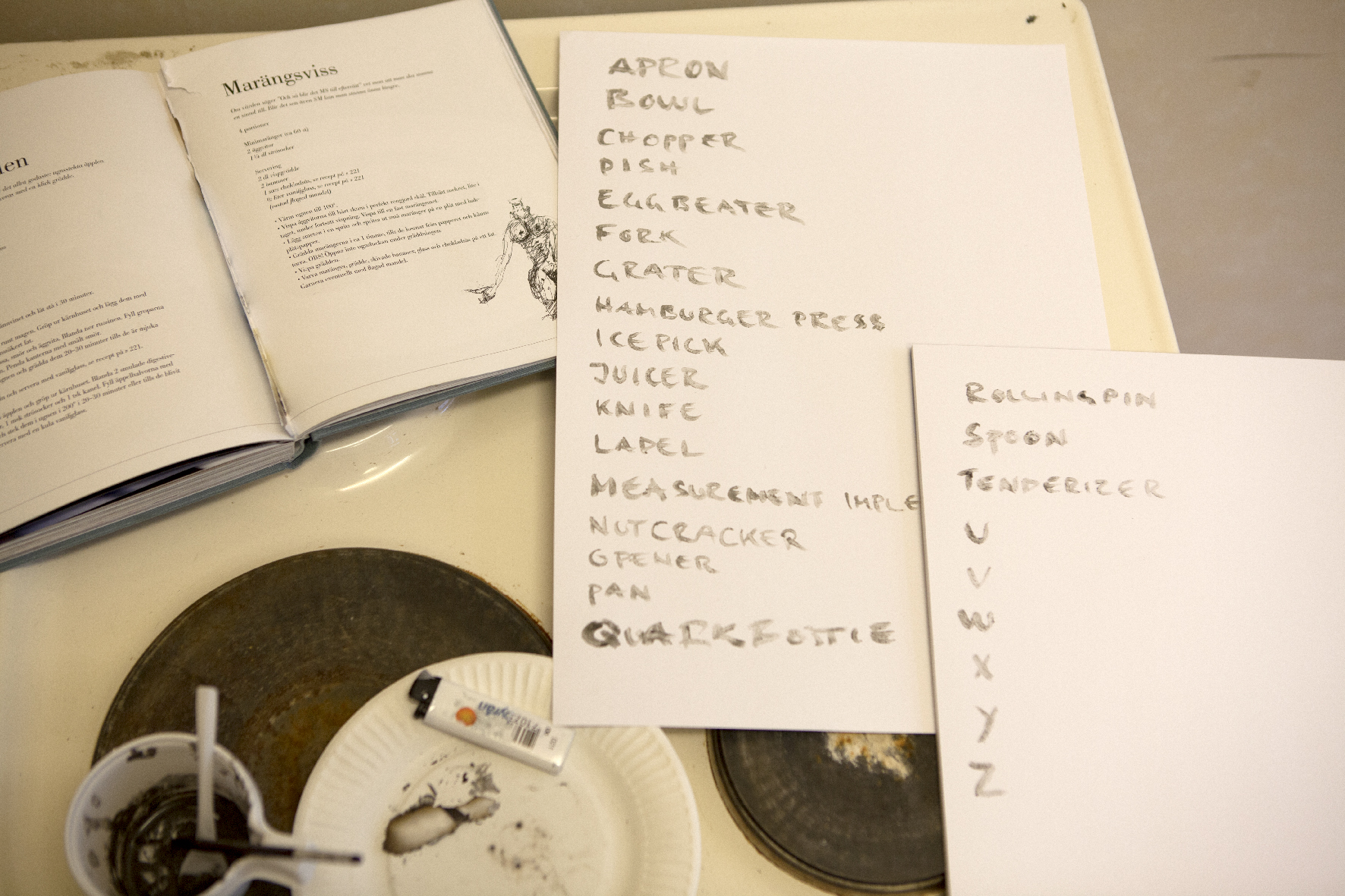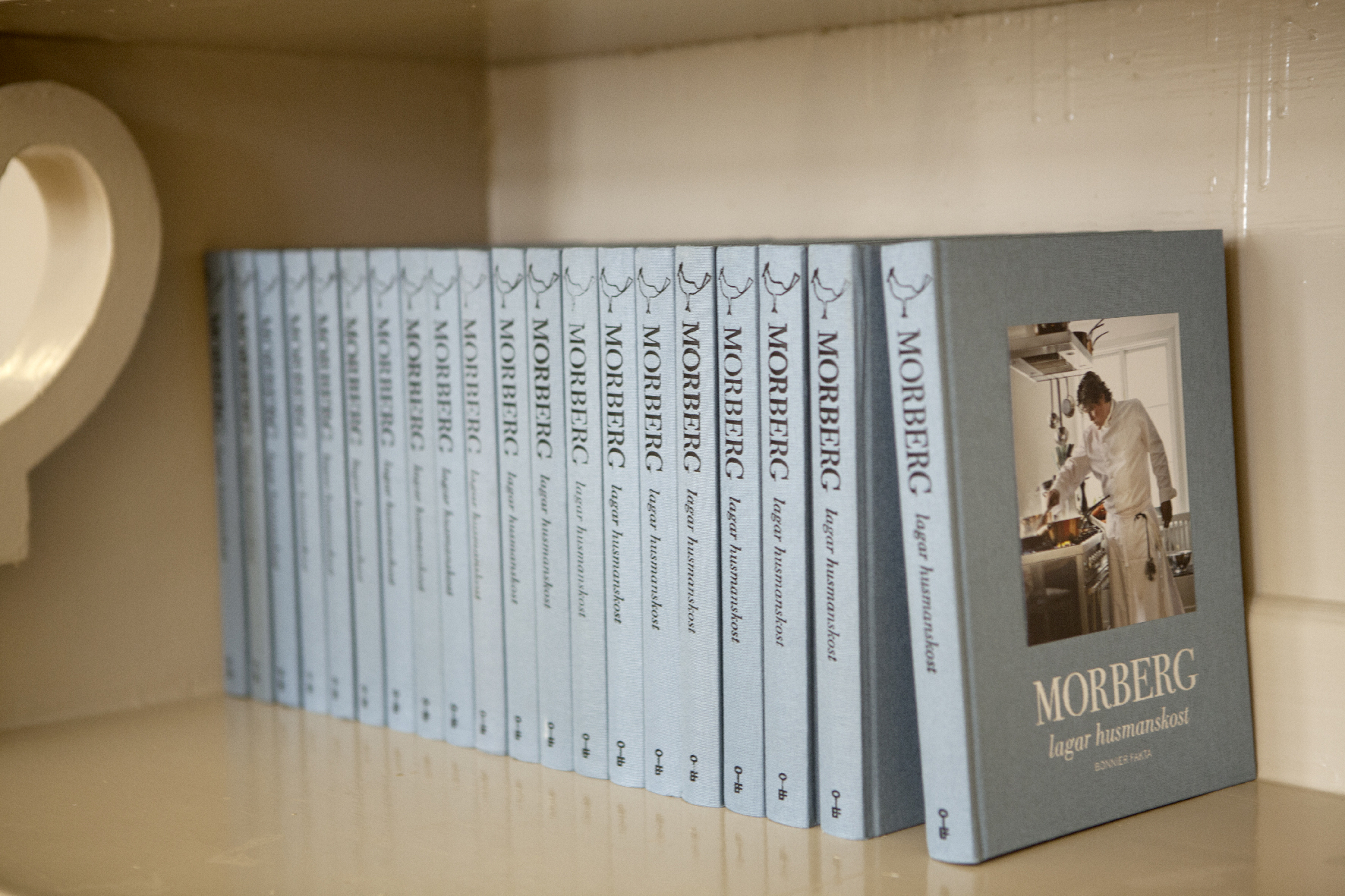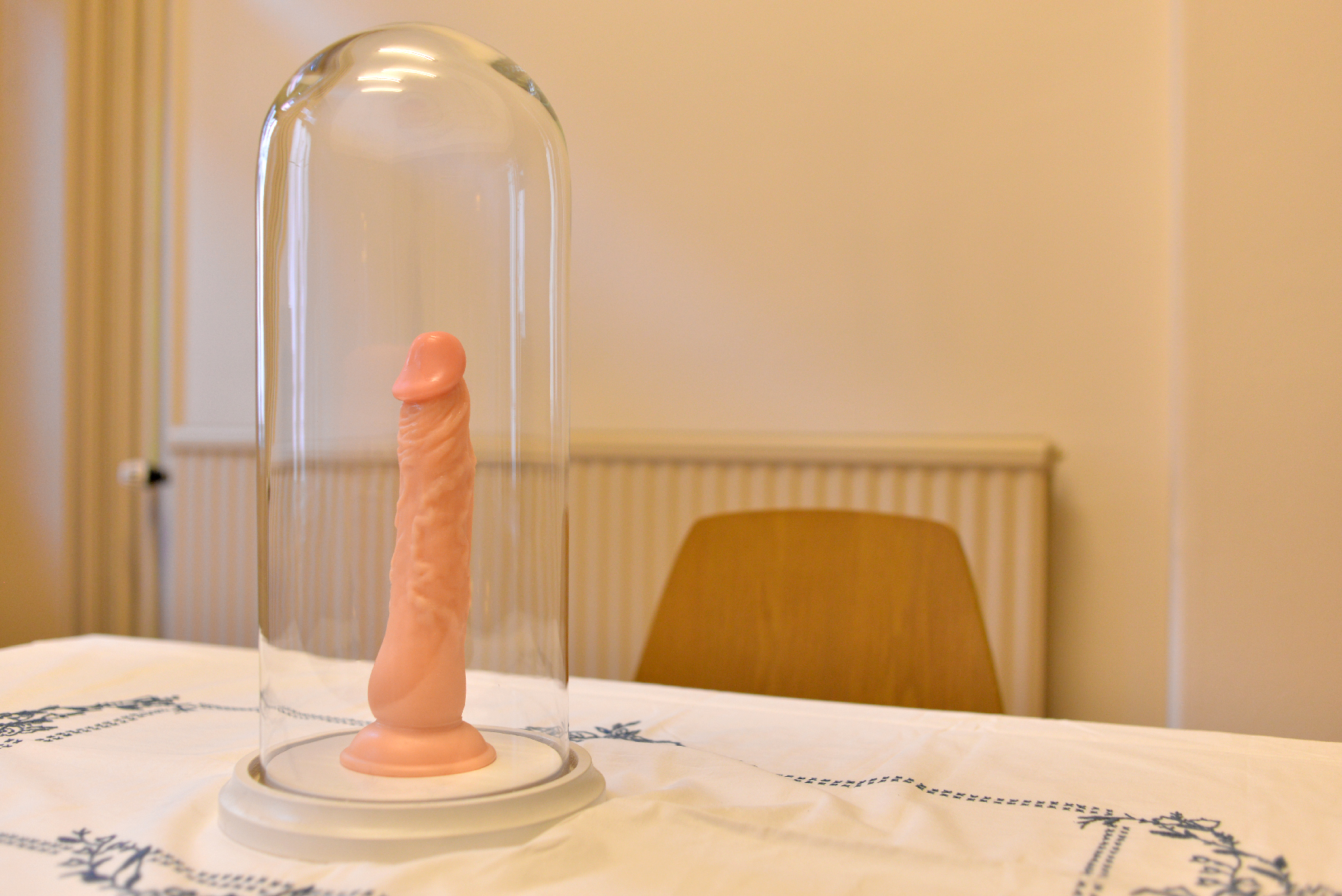Assemblage:
Dicks Revisited
Vasagatan 33, Gothenburg (2015)My work for the exhibition had three specific points of departure:
(performativity): to engage with questions on the interpretation of objects through their functional ability.
(towards a feminist methodology): through an excavation of personal history address notions of masculinity and domestic roles in relation to the kitchen and cooking. Both in general terms and more specifically within my own family.
(do make say think): to bring a more direct performative address to my work and to open up my practice to a process where the confinement of hyper-criticality in relation to making is circumvented. To promote doing and making in the process and deploy criticality at a later stage in the becoming of an artwork.
With these three aspects in mind the process started with a story.
‘In the 19th century a number of carved stone objects were found that
had a phallic resemblance. Due to the prudish and reserved nature of the times of the findings, the objects were categorized by the archaeologists as some kind of tools, most likely being used for preparing food. Later the true nature of these objects was officially revealed as dildos.’
During my research process I was investigating the relations between archaeology and imagination and how lack of imagination may perpetuate and reinforce a normative reading of history in general and specifically inform the decoding of unidentified found objects. Through reinforcing normative readings of finds archaeology can be used as a political tool to keep otherness outside of history. So there can, of course, be deliberate actions by archaeologists in trying to make history go along the beaten track, but on the other hand, even the most methodologically aware archaeologist must wrestle with their a priori conceptions of history and with what is allowed to fit into that history. The hard position of trying to take the unimaginable into account.
I wanted to, in some way, use archaeology as a metaphor and turn to my own personal history with the use of the poetic rather than the didactic. So I created a changing, experimental and performative space, in the kitchen of the exhibition space (previously an old kitchen in an apartment), through an assemblage consisting of objects, performative acts and text, connecting the work to the key curatorial concept of the exhibition - namely the laboratory.








